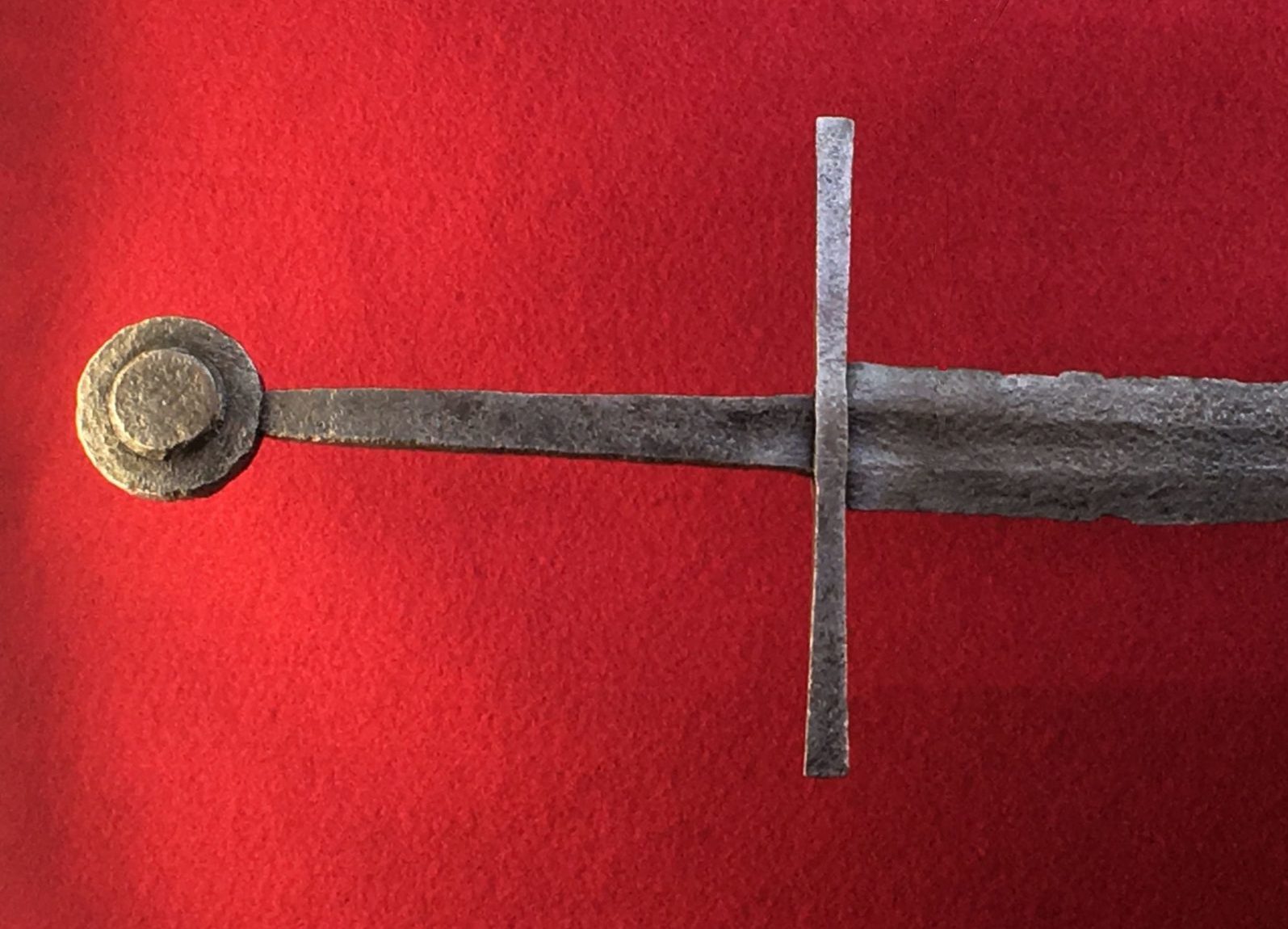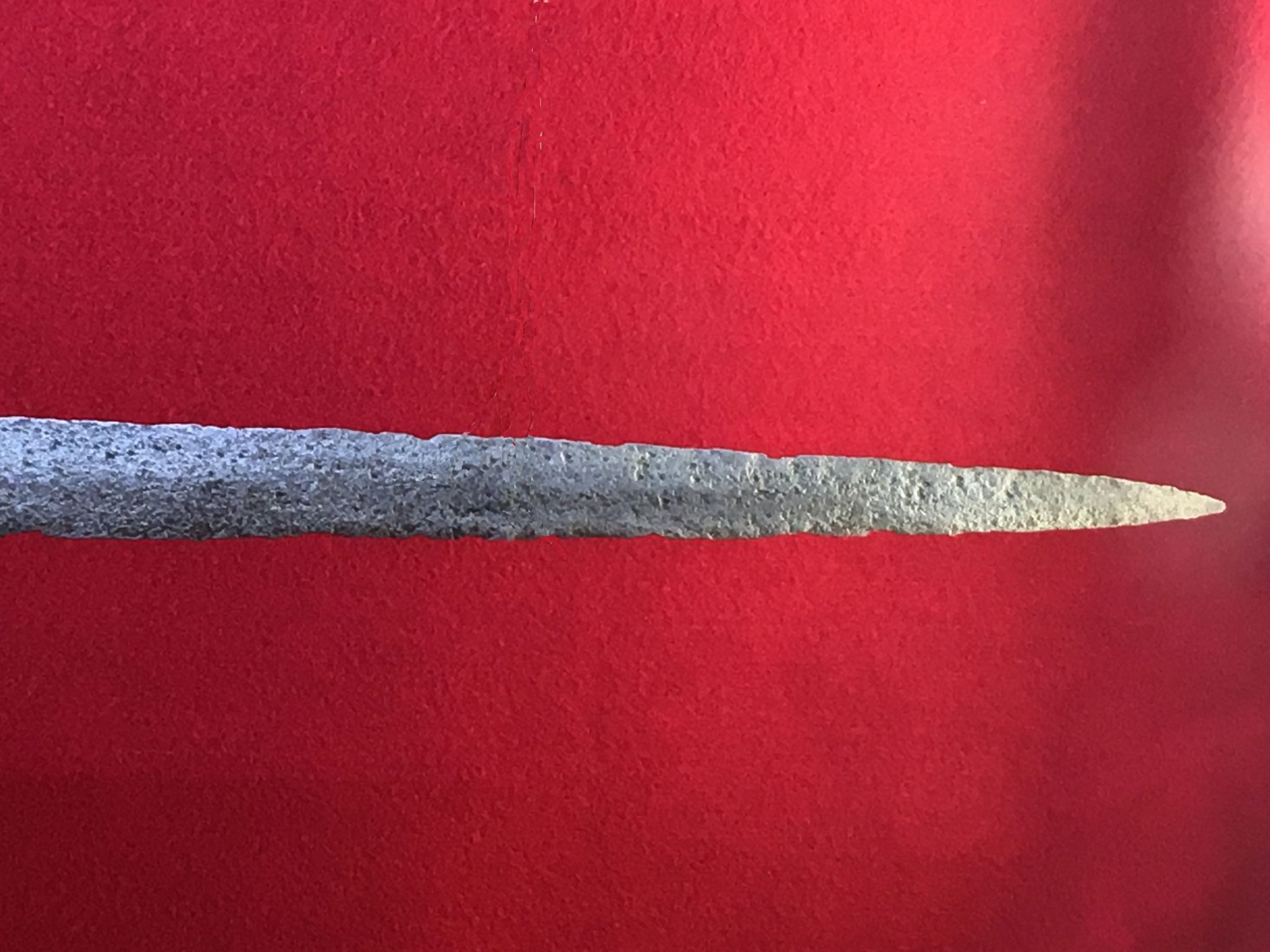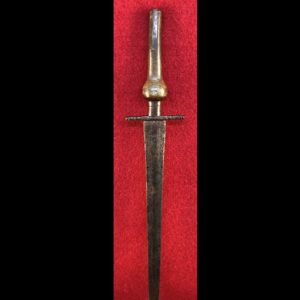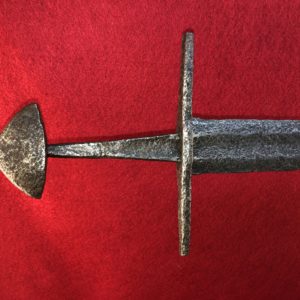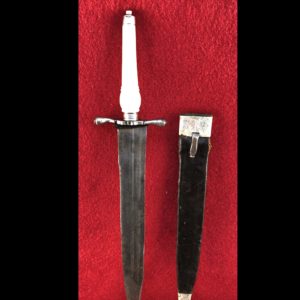Description
Oakshott type XII German Great Sword in river find condition. This sword is in remarkable condition for a sword of this age. XRF X-ray florescence tests show the sword was made exactly as a sword should be made. As follows:
The pommel is a carbon steel not particularly high grade, but it does have much higher manganese, this makes it a manganese steel, tougher and harder than normal mild steel. It can also mean a more workable steel.
The tang is matching up to a low alloy carbon steel, meaning its tougher, it has less manganese but also has copper included for different properties, you would expect the tang to need more shock resistance hence the reduced manganese, it would be necessary to reduce the manganese to stop the tang from being too hard, it needs to have more elasticity, its matching up with a good fabrication philosophy.
The guard is a low alloy carbon steel, with a reasonable amount of manganese in it.
The lower blade, this was taken just below the guard, the steel now begins to change somewhat at this point it is a reasonable carbon steel,
Middle blade, apologies for the harder to read photo but basically it’s still a low alloy carbon steel but with a few additional elements, these include nickel, chromium, and molybdenum, manganese level is lower but with these additional elements it stands to reason that the steel is improving and becoming more sophisticated, the added elements in small proportions would alter the steel giving it some properties like added toughness, resistance to corrosion as well as impact strength, Typically you would see these elements in much higher quantities in a modern steel that would be used for an implement like a sword however the much lower quantities could well be that the maker had knowledge of what the elements do but was not able to do much more than put these amounts of additional alloying elements into the steel, there would also be the forging of the blade and what affects this had on the steel.
Bottom of the blade I have added a couple of shots of the lower blade, I shot this around 4 times, the lower blade had a couple of different results, I believe this is because the sword is layered, we can see a that shot one of the lower blade is a low alloy steel with some additional elements similar to the middle of the blade, then the other shows chromium in quite a bit higher levels, it is a different make up of steel.
To conclude this discussion on this blade,
This blade is not as good quality as the second blade we surveyed but is does show the hallmarks of being made in a philosophy that would put the lower grade steels in places of lesser importance like the pommel, tang and guard, the steel does improve as we travel down the blade, becoming a layered blade, the level of carbon in the steel is not quantifiable with an XRF machine however based on the existing elements we get a good feel for the make up of this blade. My thoughts are that if this was made in modern times the steel would give us different results, I also see all the elements required to improve the steel but at quite low quantities almost like it was not possible at the time to do any better.
Also I consider that this sword would need to be a grade required to cope with other steel swords of the day and not much better, obviously the better grade of steel in your sword would be a great advantage however people tend to only make things as well as they need to be made at the time. It seems to me that whoever made this went to the time and effort to forge the blade in a thoughtful way, if this is a modern fake then the person forging it is very good at what he does, thing is that he probably would have got some good money for this blade if he had left it complete from the forge as opposed to some aging. Point I’m trying to make is why would anyone age a sword to give to fool someone into paying a price for something when it was worth that anyway? Couple this up with the balance, tactile feel of the sword and you have a beautiful piece, I believe that this is genuine.
Test results can be supplied if requested.
Expressions of interest only please
